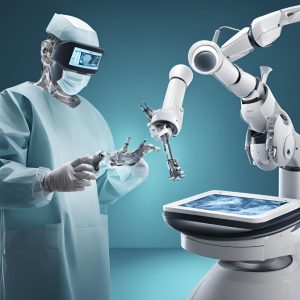In Biomedical Engineering Breakthroughs, I have witnessed some groundbreaking advancements that continue to reshape the future of healthcare. Biomedical engineering has grown rapidly in the last decade, merging cutting-edge technology with medical science to improve patient outcomes and revolutionize treatment.

1. Wearable Health Technologies
One of the most impactful breakthroughs in recent years has been the rise of wearable health technologies. Devices like smartwatches and fitness trackers have become household staples, but the potential goes far beyond step counting. These wearables can now monitor heart rhythms, detect irregularities such as atrial fibrillation, and even measure blood oxygen levels. For patients with chronic conditions, wearable technology offers real-time data and continuous monitoring, allowing for quicker interventions and reducing the risk of life-threatening events.
2. Artificial Organs
Artificial organs represent a monumental leap forward in biomedical engineering. From artificial hearts to synthetic kidneys, these devices are saving lives where traditional transplants fall short. The development of bioengineered organs, such as lab-grown tissues or 3D-printed constructs, is inching closer to solving the global shortage of organ donors. It is thrilling to see how far we’ve come, especially when I think about how these advancements could potentially eliminate the waiting list for transplants one day.
3. Tissue Engineering and Regenerative Medicine
Tissue engineering is an area that continues to astound me. The ability to create living tissues in the lab, which can then be used to repair or replace damaged tissues, is extraordinary. One breakthrough in particular is the development of biocompatible scaffolds that help cells grow into functional tissues. In the near future, we could be looking at full regeneration of organs like the liver, which has tremendous implications for patients with liver failure. My own experience in this field has shown me just how delicate and complex these processes are, yet they offer so much promise for the future.

4. Biomedical Imaging Innovations
Medical imaging has always been vital for diagnosis, but recent breakthroughs have taken imaging to a new level. Advanced techniques like functional MRI (fMRI) and PET-CT scanning offer unprecedented detail, allowing doctors to see inside the body in ways we never thought possible. These innovations are transforming how we detect and treat diseases such as cancer, neurological disorders, and cardiovascular conditions. The future of non-invasive diagnostics looks incredibly bright, with even AI-powered imaging now becoming a reality, enhancing the accuracy and speed of analysis.
5. Robotic Surgery
Robotic surgery systems like the Da Vinci robot have become a cornerstone of modern operating rooms. These machines allow surgeons to perform highly complex procedures with enhanced precision, flexibility, and control that human hands alone couldn’t achieve. I’ve seen firsthand how robotic-assisted surgery has drastically reduced recovery times and minimized complications for patients. The possibilities in this area are truly limitless as engineers continue to refine and enhance robotic technologies for even more delicate and intricate procedures.
6. CRISPR and Gene Editing
No discussion of biomedical breakthroughs would be complete without mentioning CRISPR technology. This gene-editing tool has the potential to treat genetic disorders at their root by directly altering DNA. For conditions like cystic fibrosis or sickle cell anemia, CRISPR offers hope where traditional treatments fall short. In my work, I have seen the excitement around these innovations, though there are still ethical considerations and challenges to be addressed before we fully unlock its potential.

7. 3D Bioprinting
The use of 3D bioprinting to create tissues and organs has revolutionized the field of regenerative medicine. By precisely layering bio-inks made of living cells, scientists can create complex structures that mimic natural tissue. While we’re still in the early stages of bioprinting fully functional organs, the progress is remarkable. The applications extend beyond organ creation to drug testing and even personalized treatments, reducing the need for animal testing and ensuring more reliable results.

